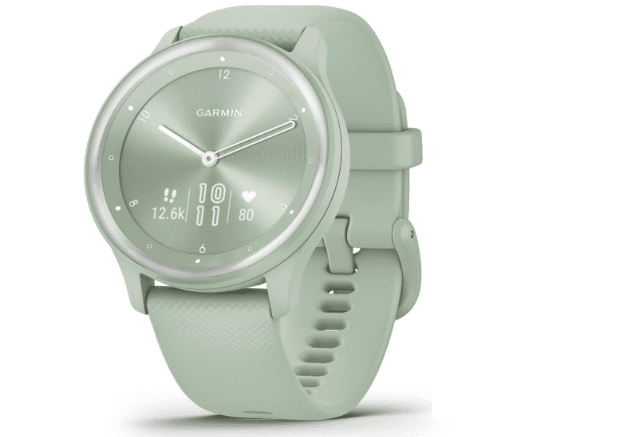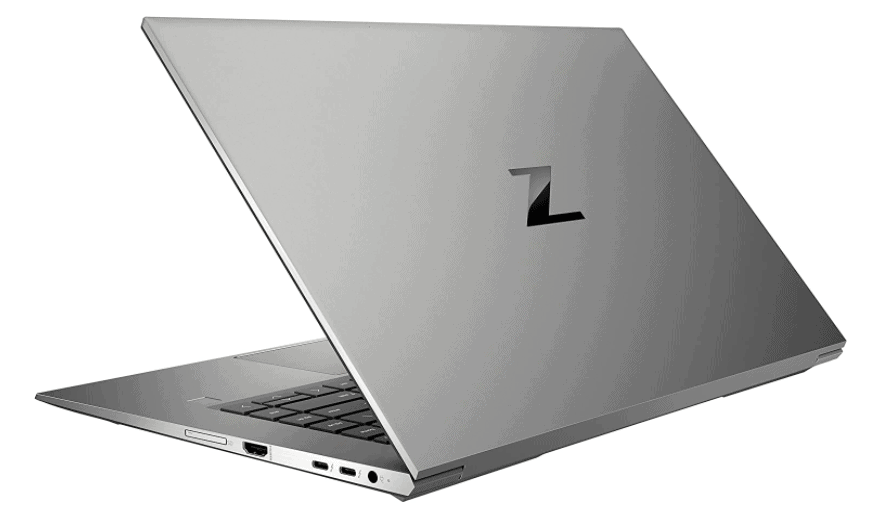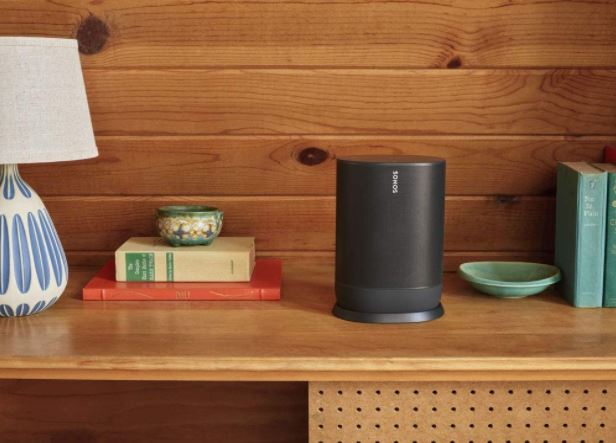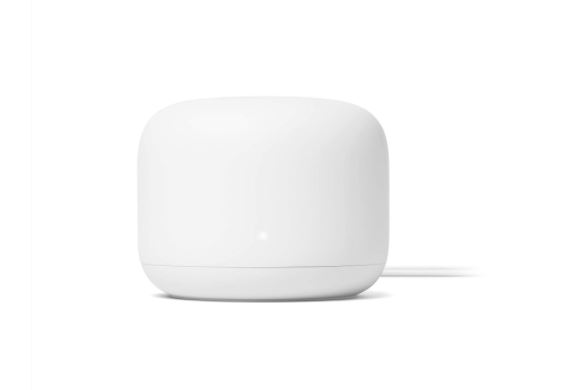I’m generally the first to call out firms that seem to overlook design or place it far down the priority list when developing a new wearable. I believe it is critical that every substance we put on our bodies be at least remotely appealing. But I’m ready to forgive Garmin because, while the Vivosmart 5 fitness tracker looks incredibly generic, it nails the second most crucial component of wearables – the app. Let’s take a look at how a great user experience keeps the Vivosmart 5 from being overlooked.
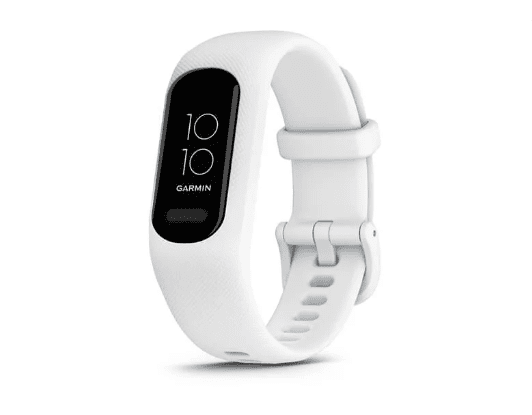
Garmin Vivosmart 5 Design
The Garmin Vivosmart 5 is utilitarian rather than attractive. The dimpled silicone strap houses the core module of the Vivosmart 5, which sports a small monochrome OLED screen and a single tactile button. My review model is white, but several colors are available to brighten it up, and the polycarbonate module can be easily taken from the band and replaced with one of the replacements sold by Garmin for $30.
It’s as plain and uninteresting as they come, especially in dull black. I’d like to hide it under my cuff, but because the casing is fairly bulbous, it never fits comfortably under it. An oddly unique issue with comfort that may just impact me is that the keeper refuses to release go of the strap when attempting to remove the Vivosmart 5, instead uncomfortably grasping my arm hair in an attempt to prevent me from abandoning it. It causes me to rip it like a Band-Aid.
The small OLED panel is protected by an acrylic lens and has a resolution of 154 × 88 pixels. It is visible in direct sunshine, and the touchscreen is sensitive and dependable. The physical button will appease people who disliked the haptic button on the Vivosmart 4, but it will age the design of the next model. But I’ll take that trade-off because it makes using the Vivosmart 5 so simple, with a quick touch to select features and a long press to stop a workout.
Garmin makes the Vivosmart 5 tracker in two sizes: one for small-to-medium wrists and one for large wrists. The weight varies slightly, but at 26 grams at its heaviest, there is little tiredness from wearing it all day. For reference, I’m wearing a large on my 6.5-inch wrist and have the buckle on the sixth hole, leaving 14 open for adjustment.
Fitness trackers are rarely gorgeous, but for those who care about design, there are some options. Garmin provides the Vivomove Sport if you like a watch-type aesthetic, or the Fitbit Luxe if you prefer a fitness tracker style. Because of its plain style, the Vivosmart 5 risks being missed, which is a mistake, as we will see.
You may also like Garmin Venu 2 Plus: GPS Smartwatch with Advanced Health Monitoring
Activity and sleep-tracking Comparisons
When I compared the Vivosmart 5 to the Apple Watch Series 7 during a 40-minute walk, I discovered that they both matched on average heart rate and total calories burned, indicating that the accuracy of both devices is good. The gadgets usually matched up in other workout kinds as well, although it’s critical to hold the Vivosmart 5 snugly against your wrist for perfect heart rate tracking. If it’s even slightly slack, it can misread, affecting blood oxygen levels and heart rate overnight.
When I compared the sleep monitoring of the Vivosmart 5 to the Oura Ring, the Garmin tracker recorded a longer duration of “sleep” than the Oura Ring because it did not recognize when I was awake in the morning. The Oura Ring, on the other hand, continues to believe I’m awake during the night when I’m not, something the Garmin avoids.
The Garmin scored my 7-hour, 42-minute sleep as 95/100, whereas the Oura scored 7-hours and 21-minutes as 83/100. The heart rate estimate differed greatly from the Oura, with the lowest recorded being 9 beats per minute, which appears improbable given that the Oura Ring did not detect anything lower than 47brpm. The sleep-tracking discrepancy would very definitely be resolved by tightening the band, however, I find this uncomfortable. I didn’t notice the Vivosmart 5 at all while wearing it loosely.
You may also like Fitbit Versa 2 Health and Fitness Smartwatch
Garmin Vivosmart 5 Health Tracking
The Vivosmart 5 boasts a sophisticated sensor array that measures your heart rate every second and monitor for abnormal changes, as well as blood oxygen levels and stress and sleep tracking. The Garmin Connect app, which is available for iOS and Android, collects all of the data from your daily activities, workouts, and sleep. I have been using the Vivosmart 5 in conjunction with an iPhone 14 Pro.
Garmin Connect is fantastic. This is why you should consider the Vivosmart 5. It’s exhaustive and data-rich, providing deep insight into your body’s status and function. It performs all of this for free — there is no membership model to access extra features or past data — which is a significant advantage over Fitbit’s competition. Yes, the amount of information provided is a tad overwhelming, but I would rather have too much than not enough.
A 50-minute walk includes data on pace, speed, timing, and heart rate, as well as calories burned, average temperature, and workout intensity. The Vivosmart 5 lacks its own GPS and must rely on your phone’s GPS for location data. When it’s connected to an iPhone, you have to activate the app first if you don’t want it to have constant access to your location. I was able to put my phone back in my pocket after the GPS was connected. The resulting map includes pace information, a breakdown of laps, ambient temperature, and elevation to provide a complete picture of your workout.
Everything you may want or need is available. It’s certainly overkilled for me, a casual exerciser. I interpret this to suggest that the more diligent individual will find all of the knowledge they require. The Vivosmart 5 offers running, cardio, strength, cycling, pool swimming, HIIT, and a range of other workout-tracking modes in addition to walking.
Goals can be established manually, however, the platform will add goals for you to meet by default. They are set rather low, and altering them necessitates searching through several menus to discover the option. Connect can be difficult to browse, and there are multiple ways to get the same data, making it appear busier than it is.
Garmin’s smart Body Battery stat is my fave. It considers stress, sleep, and heart rate variability to help you measure your energy reserves for the day and better appreciate how hard you’ve worked out. It’s instructive and easy to understand, and it helps make sense of facts that could otherwise be overlooked or ignored.
The only drawback is that there isn’t much motivational feedback, and while there is a lot of explanation language explaining what all the data means, you have to actively seek it out.
Garmin Vivosmart 5 Battery
According to Garmin, the Vivosmart 5 has a battery life of up to seven days. This is only if you choose not to use blood oxygen monitoring and sleep tracking. If you do monitor them, you should expect a three-day maximum with a single daily workout lasting 30-to-50 minutes. Overnight, the Vivosmart loses roughly 15% of its battery power.
This is a concern because the Body Battery feature, which I love and think is a large part of the Vivosmart 5’s appeal, considers your sleep. Furthermore, blood oxygen levels are useful for a variety of areas of health surveillance. It feels like a waste not to use one or both of them. Simply said, Garmin’s seven-day battery estimate does not apply to anyone who intends to use the Vivosmart 5 as intended. It charges using the bundled proprietary cable and takes a couple of hours to charge from 10% to 100%.
You may also like The best fitness trackers to Buy in 2022
Operating System and Notifications
A touchscreen and a single button on the front control the Vivosmart 5. Your current metrics are all concealed beneath a branched menu, so you must swipe and tap several times to reveal them. To enter the main menu and find workouts, as well as the heart rate measurement feature, a means to change the watch face, and set timers, press the button. It’s really responsive, and once you’ve gotten acclimated to the layout, you can locate what you’re searching for quickly.
Notifications have arrived on time, but there is no way to interact with them, and the formatting is typically off owing to the small screen. It suggests they’re good for a quick glance but not much else. Furthermore, they cannot be remembered, so if you miss the alert, you will be unable to determine what it was. Notifications are supplementary feature that does not match the functionality of a full smartwatch.
CamRojud may earn a certain commission on products purchased via our links, which supports our effort on this content.
Would you like to read more about Garmin Vivosmart 5-related articles? If so, we invite you to take a look at our other tech topics before you leave!







